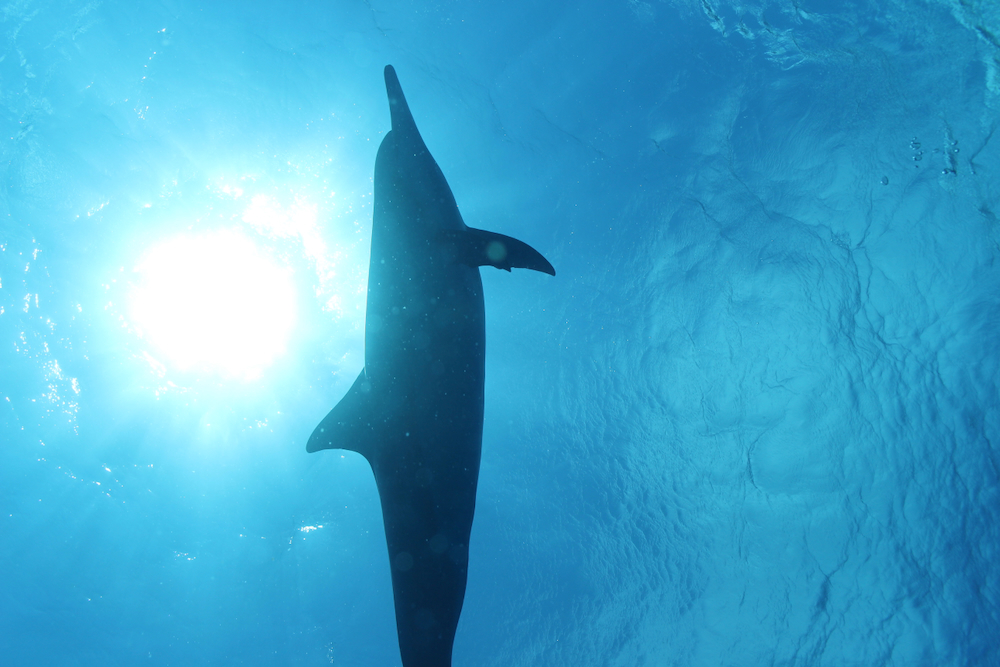Dolphins are one of the top wildlife attractions in Hawaiʻi, and for good reason. Watching them leap through the waves or glide near your boat is a memory that sticks. But with their popularity comes a problem. Not all tours are safe for dolphins, and not all visitors know the rules.
In 2025, new laws and NOAA regulations are helping protect these smart marine animals. Some tour companies follow these rules, some don’t. If you’re visiting Oʻahu and want to experience dolphins the right way, this guide is for you.
The 2025 Laws and NOAA Guidelines You Should Know
Dolphin tourism in Hawaiʻi changed in recent years. Why? Because dolphins were being pushed too far. Too many boats, too many swimmers, and too little rest for the animals. In response, NOAA and other government agencies created clearer rules.
Key Dolphin Protection Laws in 2025:
- No swimming with dolphins in the wild within 50 yards, by law
- Boats must stay 50 yards away from dolphins at all times
- No circling, chasing, or cutting off dolphins
- Tour operators must be certified and follow NOAA guidelines
- Dolphins in rest zones or bays must not be approached
These laws are in place to give dolphins space to eat, rest, and live without human stress. Dolphins, especially spinner dolphins, are active at night and rest during the day. Too much disturbance affects their health and survival.
The Decline, Then the Comeback of Dolphins in Hawaiʻi
Over the last few decades, dolphin populations in Hawaiʻi, especially around the main islands, began to drop. This was linked to:
- Increased boat traffic
- Unregulated swimming tours
- Lack of enforcement of older rules
- Tourists unknowingly stressing resting pods
But after strict laws rolled out in 2021 and 2022, and with more education in place by 2025, things are looking up.
Positive Changes Since the New Laws:
- More dolphins spotted in known resting areas
- Healthier pods with more calves being born
- Fewer tourist complaints of “no dolphins today”
- More companies offering legal, ethical viewing tours
The shift is working. When people respect the rules, dolphins respond. Oʻahu is now seeing a rise in dolphin numbers, and responsible tourism plays a big role.
Warning, Some Companies Still Break the Rules
Even in 2025, not every dolphin tour is legal. Some companies still advertise “swim with wild dolphins” experiences, even though that’s banned under federal law. These companies either skirt the rules or operate without permits.
Watch Out for These Red Flags:
- Ads that promise close dolphin encounters or swimming with dolphins
- Boats that rush toward dolphin pods or get too close
- No mention of NOAA regulations or environmental rules on their website
- Tour guides encouraging you to dive in near dolphins
Supporting these tours hurts dolphins and fuels the kind of tourism that led to their decline in the first place.
Instead, look for certified tours that educate you, follow the laws, and offer respectful, legal viewing. Watching dolphins from a distance can still be amazing, and even more meaningful when you know it’s not harming them.
Are Dolphin Tours Ethical?
It depends on the kind of tour. Here’s the breakdown.
Captive Dolphin Tours:
- Dolphins are kept in tanks for entertainment
- They don’t live natural lives and may suffer stress and boredom
- Ethical concerns are high, and many marine biologists and activists do not support captivity for dolphins
Wild Dolphin Tours (Following the Rules):
- Dolphins remain in their natural habitat
- Boats stay back and watch from a distance
- There is no touching, no chasing, and no swimming with dolphins
- These tours help fund conservation and education
When done right, wild dolphin tours are ethical, educational, and amazing. You get to see dolphins being themselves, not performing for food. And your money goes to companies helping protect them, not harm them.
See Dolphins, Save Dolphins, Travel Smarter in 2025
Being a dolphin-friendly tourist in 2025 is simple. Follow the laws, choose ethical companies, and enjoy the experience without harming the animals. The dolphins are bouncing back in Hawaiʻi because people and businesses are doing better. And now you can be part of that story.
Whether you’re on a boat off Oʻahu’s coast or watching from shore, your choices matter. Make them count.











